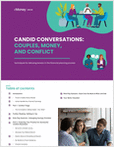Lurking in your clients’ homes lies a risk that can cause major stress as well as financial loss.
Perhaps surprisingly for people who live away from coastal lowlands and other flood-prone areas, the risk comes in the form of water damage. While smoke detection systems and burglar alarms are common, insurance claim statistics show that water damage is seven times more likely to occur than a fire and six times more likely than a burglary.
(Related: Earth, Water, Fire: How to Protect Your Clients’ Homes)
While the Insurance Information Institute has calculated that about $18.5 billion in homeowner losses in 2015 were due to water damage and freezing, most homeowners do nothing to address the threat. Most also don’t realize that insurance typically doesn’t cover the expense of living away from one’s home for possibly several months while costly water damages are repaired.
To be sure, financial advisors largely do not deal with homeowners or renters insurance directly, but educating your clients about protecting themselves from this underappreciated risk can help forge your bond with clients as a trusted advisor and potentially save your clients substantial sums of money.
More Than Flooding
Data shows that water damage can be expensive to repair. After reviewing homeowners’ insurance claims from several insurance companies around the country, the Insurance Institute for Business and Home Safety (IBHS) found that plumbing supply system failures from frozen or broken pipes were the leading source of residential water damage and cost an average of $5,092 per incident after the deductible was paid.








 October 02, 2017 at 08:00 PM
October 02, 2017 at 08:00 PM










